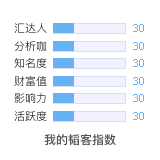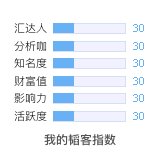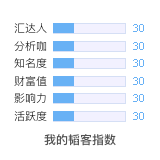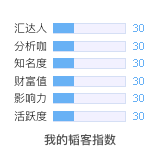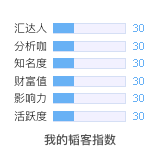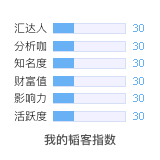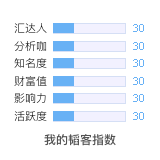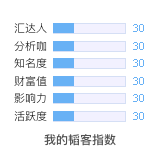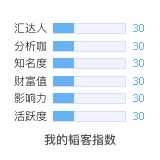[讨论]这轮反弹是回光反照,美日9月底见110?
主要观点
风险评估带来的信贷收缩已经是事实。而且以以往的经验,随之而来的经济衰退很难避免。无论9月份美联储是否降息,都会使资金继续从风险投资撤出,除非中国或波斯湾国家吸收这些风险投资,否则全球股市持续大幅下跌将不可避免。
USDJPY to 110?
Thursday, 23 August 2007 06:33:42 GMT
Written by Boris Schlossberg, Senior Currency Strategist
The recent plunge in USDJPY which shaved nearly 1000 points off the yearly highs in a matter of weeks has many currency traders wondering if there is more downside to come.
The drop in USDJPY was not caused by sudden divergence in economic fundamentals between US andJapan, but was driven instead by the liquidation of the carry trade. Looking at past instances of significant carry trade liquidation in USDJPY such as the Asian financial crisis in 1997 or the 1998 downfall of Long Term Capital Management fund the initial move down was inevitably followed by a retrace and then a thrust lower as the full impact of the unwind made its way felt though the global financial markets. Therefore the question to consider is whether the recent rebound in the pair is simply a dead cat bounce. Could USDJPY trade as a low as 110 by October? We examine several possible scenarios that could create that outcome.
Fed does NOT cut rates in September
At first this may seem as a counterintuitive conclusion. After all, if the Federal Reserve were to cut the funds rate by 25bp or even 50bp in September the interest rate differential between the dollar and the yen would compress seemingly hurting the carry trade. Conversely, if the Fed left the interest rates unchanged preserving the 475bp differential between the greenback and the yen - why would that hurt the carry trade? The answer has more to do with risk rather than rates. The carry trade, especially at this mature period in its cycle, thrives in a low risk, low volatility environment. When investors are content about the present and sanguine about the future they are more willing to assume risk seeking higher returns. Simply put, they are more interested in return on capital rather than return of capital.
With Japanese interest rates remaining miniscule at 50bp after tonight’s no rate hike decision by the BOJ, even a half point rate cut by the Fed would still preserve a net 425bp positive interest rate differential between the yen and the dollar. Of far greater importance to the carry trade will be the attitude of equity investors towards risk. If the Fed does not cut rates, the US equity markets could become more volatile as the higher cost of credit for consumers and corporations would likely contract demand and compress profit margins causing stocks to plummet. A sharp decline in equities would bring back another wave of risk aversion and along with it more rounds of carry trade liquidation pushing USDJPY lower.
At the time of this writing, consensus is building that the Fed may indeed keep rates steady, as Fed officials continue to make hawkish commentary while most recent economic data from weekly retail sales to jobless claims has yet to show any serious signs of distress in the system. If the Fed does maintain rates steady and if that in turn creates selling pressure on Wall Street as Dow slowly tickles down to 12,000 then USDJPY will likely follow suit as risk appetite is gradually curbed.
Dow Has -1000 Point Day
The slow and steady drip is of course not the only way that the carry trade could crumble. Equity investors simply may not wait for the Fed to act and could push prices sharply lower if the problems in the credit markets persist. With fixed income investors still reluctant to finance anything but Treasury bills, the Commercial Paper market as well as the Corporate Bond market may see more episodes of liquidity stress. Given the fact that equity investors are approaching September and October - the two most seasonally turbulent months in the market a selling stampede is not out of the realm of possibility. A one thousand point down day in the Dow – which would be a milestone in nominal terms but not in percentage terms - would no doubt trigger an immediate rate cut from the Fed but at that point it would most likely be too late, as the move would be seen as reactive. Such a massive decline in US equities would no doubt reverberate around the world causing sell offs in all the major bourses and triggering carry trade liquidation in it wake.
US Economy Slows Markedly
Up to now the troubles on Wall Street have yet to affect Main Street. US economy continues to expand at a healthy pace registering better than 3% growth in the second quarter. However, as the third quarter comes to a close signs are brewing that the problems of the finance economy may be spilling over into the real economy. The most obvious economic hit comes from the more than 38,000 mortgage related jobs lost over the past month due to bankruptcies and closings of a number of mortgage brokers. However, the longer term effects of the collapse of the housing sector may been seen in the decline of demand for consumer durables such as furniture, appliances and new automobiles. Furthermore, the near 1 Trillion dollars worth of resets in Adjustable Rate Mortgages coming due over the next 12 months is likely to significantly curb consumer spending, as homeowners will be forced to allocate a greater portion of their income to debt service.
In short, the overhang from the housing sector collapse is likely to weigh on aggregate US demand and could potentially tip the country into a recession if the rate of foreclosures and bankruptcies accelerates markedly. In that scenario the Fed would need to aggressively and continuously cut rates until the economy stabilized once again. Should that occur much of the impetus for the dollar yen carry trade would be gone as traders would anticipate the persistent narrowing in interest differentials and pressure the pair lower.
Conclusion
As markets have stabilized over the past few days and risk appetite and along with it the demand for carry trade has come back, it is important to remember that past instances of carry trade liquidation always resulted in further declines after an initial retrace. Perhaps this time the situation may prove different and monetary authorities would be able to restore confidence in the markets while investors from China and the Persian Gulf absorb the risk of the credit failures in order to assure the continuation of global economic growth. However, the scenarios we’ve outlined above are quite plausible given the current market dynamics and currency traders would be well advised to consider them as they ponder the value of the carry trade at the new lower prices.
[ 本帖最后由 youngfan 于 2007-8-23 22:29 编辑 ]
发表于:2007-08-23 13:56只看该作者
3楼
你欺负我不懂abc:') :')
韬客社区www.talkfx.co
4楼
主要观点
风险评估带来的信贷收缩已经是事实。而且以以往的经验,随之而来的经济衰退很难避免。无论9月份美联储是否降息,都会使资金继续从风险投资撤出,除非中国或波斯湾国家吸收这些风险投资,否则全球股市持续大幅下跌将不可避免。
发表于:2007-08-23 14:05只看该作者
5楼
有道理,继续观查………
让一部分人先富起来,再消灭所有富不起来的,最终实现共同富裕。
发表于:2007-08-23 14:08只看该作者
6楼
作者是个BLOODY JEW, 能信他吗? what a scaremonger, 千万别相信他们, 错过这段:lol
韬客社区www.talkfx.co
发表于:2007-08-23 14:18只看该作者
7楼
我看见110了!
在第九行
发表于:2007-08-23 14:24只看该作者
8楼
韬客社区www.talkfx.co
发表于:2007-08-23 14:26只看该作者
9楼
发表于:2007-08-23 14:32只看该作者
10楼
现在都升了500多点,还停留在110啊,九月到110有如何?要是112买日圆的话我想楼主早爆了吧
;P
男人,就应该对自己狠一点!
11楼
看来下一步要关注股市楼市了
据传,虽说美国向金融市场注资和降低贴现率暂时缓解了次级债危机,但次级债风波仍没有完全得到解决,目前全球信贷泡沫正在破裂中,这轮泡沫主要是通过杠杆融资获得高风险资产。这不仅是一场流动性危机,还是一场严重的信用和破产危机,一定程度上触及到了经济的基本面,现在不仅还看不到美国次级债危机平息的迹象,相反这一危机在未来的9月到12月之间还将更为严重。后期周边市场仍有再度出现动荡的可能。虽然A股与周边股市绝缘,但在港上市的中资金融股下跌是实实在在的,相应A股不可能过度背离。更何况少数中资银行在这些领域有投资,8月底发布中报时,相应会披露美国次级债危机对相关银行的影响,周边市场动荡直接累及本轮行情的主角---银行股, 因此,"大象们"可能在五千关口前选择休整,以银行指标股为首的拉升指数行情有可能进入阶段性尾声。






